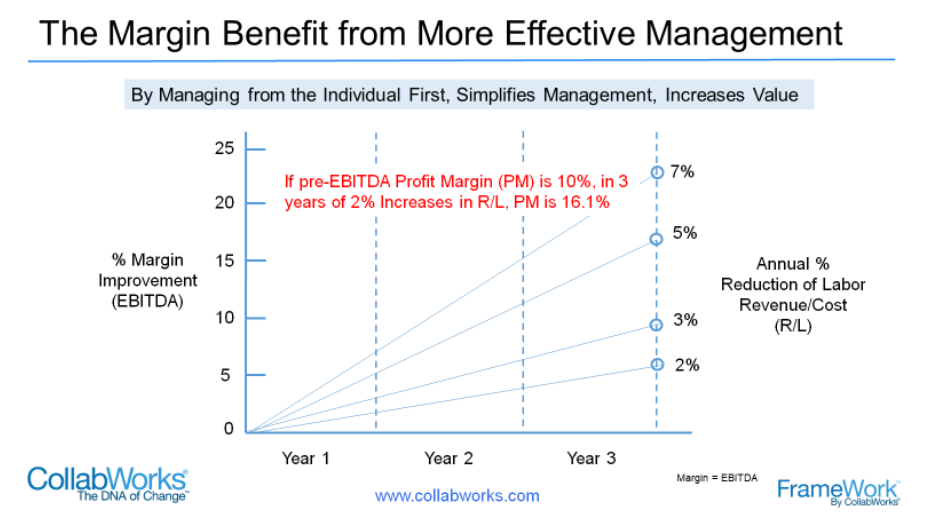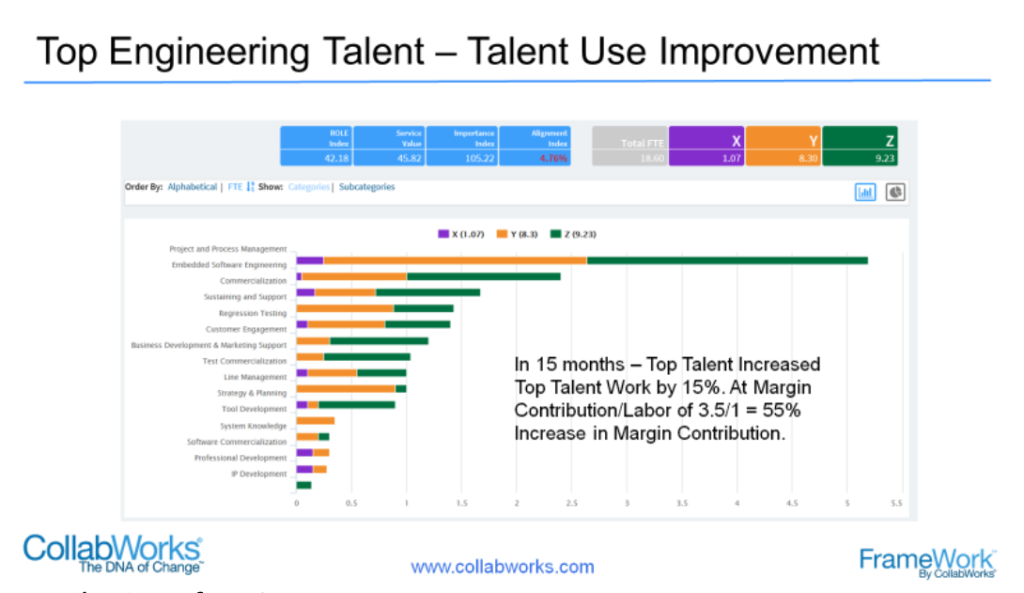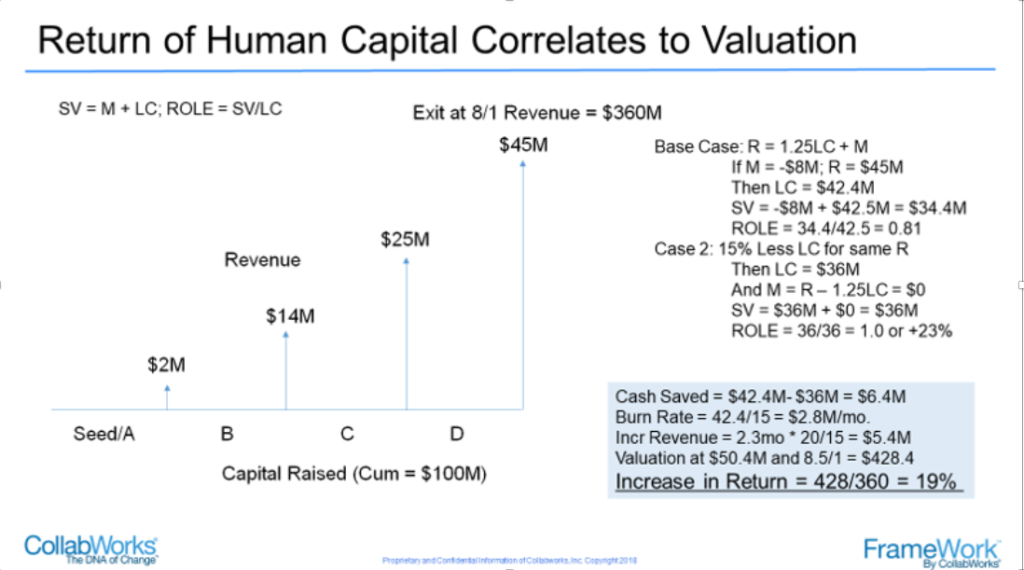As CEOs we often worry about talent. Can we achieve our objectives? Why are employees turning over? How competitive are we? Yes, talent is critical. But, the use of talent is what delivers value.
Why does talent use matter? Low Hanging Fruit to Improve Margins.

Talent is what delivers value and talent use is the efficiency of delivering that value. Wasting or misusing talent directly affects business value. We depend on managers to identify and allocate talent. We don’t do a great job of talent use because our headcount planning and allocation methods are crude, and we don’t have a reliable way of measuring talent use. Net profit (and cash flow) is directly correlated to talent use. The less talent needed to achieve the same revenue then greater the profit margin. As indicated, just a two percent improvement in revenue/labor will improve margin contribution (EBITDA) by 1-2%. If the planning process continues to improve talent use over current methods, then the margin contribution is cumulative! For example, 3 years of 2% revenue/labor improvement will produce a 5% gain in EBITDA. In addition to the financial benefits, effective talent use produces improved talent motivation and engagement.
What is the use of talent why alignment matters? Headcount Planning is Wastes Talent.
We define talent use as talent performing work. We relate talent value to the value of the work produced. For example, we pay more for an airline pilot than a stewardess because pilots require more talent and produces more value. Airlines optimize their whole routing system to optimize talent use. The problem with the headcount-based financial model is that there is no clear quantifiable data regarding the use of talent. Job titles, roles, and compensation are not connected to talent use unless the work is highly defined, and the talent use is highly structured. Assembly lines for example. For nearly all knowledge workers, it is the alignment of the right talent to the right work that optimizes talent use and margin contribution.
Use case: An engineering group increased top talent use. 15% gain in margin contribution.
A very high-performance technology group was experiencing frustration and turnover from their top talent. Why? They were required to perform work that lower level talent could perform, and they were required to interrupt their development to attend useless meetings.

As shown, the group using the CollabWorks management FrameWork identified their current use of talent and then executed on several management sponsored improvements that yielded a 15% increase in top talent use after 15 months. Since top talent work is considered high margin contribution per employee, then the management estimated an improvement in margin contribution of 55%.
Does size matter? No. The earlier you develop best practices the bigger and quicker the pay off.

When organizations are small it is easier to correlate the use of talent with achieving financial outcomes. As organizations scale we depend more on financial modeling and budgets to allocate talent and the effectiveness of talent use becomes opaque and talent waste and misuse grow. Even early round venture funded startups can yield poor talent use as intense demands on management leaves little time to focus on talent use. Developing early talent use best practices will pay off in business performance for both management and the investors. As shown, a D round investment can improve investor return by 19% by adding just 85% of the planned labor to achieve the same revenue.
The Impact of 5% in improved profit margin is strategic. Early adopters win, laggards lose. Times change, and we evolve. Most of us had not heard of Design Thinking 10 years ago. Now it is the new normal. The ability to manage and measure talent use is now available and will become standard management practices. The benefits over time are huge, yielding an unfair advantage for early adopters.



Recent Comments